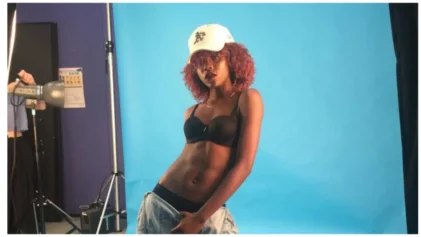By the latter half of the 1980s, Soul II Soul had built a monstrous following as a sound system collective in the UK. Starting in 1982, Trevor “Jazzie B” Beresford Romeo, the sound system’s maestro began to develop and implement a plan of success for his musical outfit. After a series of single releases called dub plates in 1988, Club Classics Vol. One/Keep On Movin was released on April 10, 1989 by Virgin Records. Upon its release, the fervor surrounding the album increased exponentially due to the popularity of the lead single, “Fairplay.”
The years spent in formulating an eclectic sound finally paid dividends for the sound system. As a result, music audiences began to gravitate to their groundbreaking sounds en masse. Soul II Soul encompassed a vast array of sounds and voices. Their formula for unparallel success was due to the fact of their constant change within the sound system. During this juncture, there were a plethora of outstanding musical groups dominating the musical landscape, but Soul II Soul was that rare brand of artists that comes along once every generation.
Arriving on the scene in stellar fashion, Soul II Soul left an indelible mark on not only their contemporaries, but the music industry itself. Their indiscriminate mixture of music genres within an African theme dominated the ears of pop and urban culture in several countries. Soul II Soul became an in-demand act after the release of this album in the spring of 1989.
This album would provide the world with an impervious view of the club culture dynamic and how infectious it could be once given the opportunity to shine on a larger scale. Each of the ten songs on the album showcased the evolution in Soul II Soul’s intergenerational sound. It would also become the first in a string of fecund recordings between the years of 1988-1992.
The album would highlight the production talents of Trevor “Jazzie B” Beresford Romeo and Nellee Hooper with incomparable vocal contributions from then sound system members Caron Wheeler, Doreen Waddell and Rose Windross. All of these elements put the world on notice that Soul II Soul was staking its claim as one of the biggest acts on the planet.
Soul II Soul began as a sound system playing records at house and street parties in London, UK during the early 1980s. They recorded various records called dub plates, which became highly popular in their hometown. Due to their impact, they established their style and clothing line by dubbing it Funki Dreds.
As the story goes, after various personnel changes in the corresponding years, they achieved their first smash record in 1988 entitled “Fairplay,” which led to the signing of their initial record deal with Virgin Records. They would release their debut album with the label a year later.
Between the months of January and March 1988, Club Classics Vol. One/Keep On Movin was recorded in Addis Ababa Studios, Lillie Yard Studios and Britannia Row Studios in London, UK.
SoulCulture recently sat down with Trevor “Jazzie B” Beresford Romeo to delve into the process of creating an epic album.
Romeo spoke on how important the studios were in contributing to the making of the record.
“We recorded this album at Addis Ababa Studios in Harold Road in London, which doesn’t exist anymore,” says Romeo. “But I have to give credit to Tony Addis here. He allowed us to use his studio for free initially. Once things picked up, we were able to pay him. From there, we recorded in Lillie Yard Studios in Fulham, this was Hans Zimmer studio. All of our production work was done at Britannia Row Studios in London. I don’t think any of these studios exist anymore.
“By trade, I’m a sound engineer. A lot of these studios I would’ve been working at or I’ve worked there before. And in respect to the relationships I had with these various studio owners at that time, I was able to record there. Soul II Soul was making music for my sound system back then and we were very popular in the UK. Most people would’ve been aware of what was going on.”
Romeo recounts the instruments that were used and the studio atmosphere that existed during the recording process.
“This first album was pre-MIDI,” says Romeo. “We were toying with some real old stuff. At one stage on ‘Feel Free’ and ‘Fairplay,’ we used an old synthesizer from Hans Zimmer. We also used an SP-1200, lots of outboard equipment in the studio such as the AMX Echo delay machine and we used this as our sampler. These were the kind of things we used to create the record. We used the Moog synthesizer to create our bass sounds. There was obviously a lot of tracking going on there in the evolution of the album. We used 2 inch quarter tape to record and during the editing process we were splicing up the tape as well.
“It took about two or three months to record to whole album because initially the songs were done as singles. The singles were being played way before the conception of an album. The type of deal we had were single deals and the whole idea of the actual album wasn’t something we were interested in doing at that time. All of the artists on the singles were featured artists.
“Many of the artists who were initially involved were session artists. It wasn’t actually put together as a group. Obviously, in a group situation you have different members doing different things. That wasn’t the case at all. It was like fuck it and we’ll see what happens type of thing,” he laughs.
To read entire interview, go to: Soul Culture


